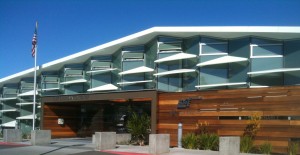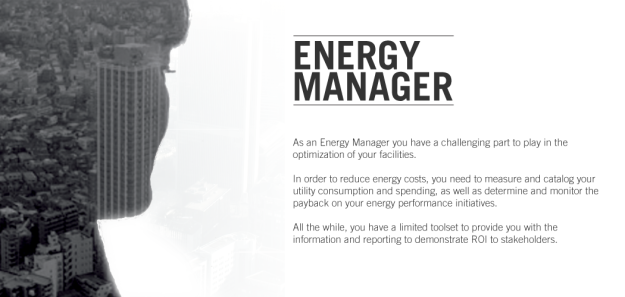Building Code Revision Launches In California Toward Zero Net Energy Buildings Article By: Bill Roth at Triple Pundit
Starting in 2014, California is implementing a tsunami of building code revisions called Title  24. These revised building codes will move California’s residential and commercial buildings toward Zero Net Energy (ZNE). In a ZNE building, the annual energy consumption is equal to its annual production of renewable energy. Under Title 24, all new residential construction is to be ZNE by 2020 with all new commercial buildings achieving this ZNE goal by 2030.
24. These revised building codes will move California’s residential and commercial buildings toward Zero Net Energy (ZNE). In a ZNE building, the annual energy consumption is equal to its annual production of renewable energy. Under Title 24, all new residential construction is to be ZNE by 2020 with all new commercial buildings achieving this ZNE goal by 2030.
Title 24 moves building design toward “comprehensive building solutions.” This building design approach first focuses upon reducing energy consumption through the integration of smart and energy efficient technologies. The final design step after reducing the building’s energy consumption is to install onsite renewable energy generation like solar panels.
Existing California buildings heading toward ZNE, too
As these new codes are being analyzed by the construction and real estate industries, there is a growing realization that Title 24 will apply to existing buildings that implement threshold-sized remodeling or repurposing construction projects. In addition, California’s Governor Jerry Brown has authorized through an executive order that state agencies shall take measures towards achieving ZNE for 50 percent of the square footage of existing state-owned buildings by 2025.
Major shift in utility financial incentives
In coordination with these code revisions, the California Public Utility Commission (CPUC) is revising the financial incentives offered through utilities to encourage energy efficiency investments by building owners. The CPUC is reducing or eliminating past financial incentives for energy efficiency investments that are now mandated by Title 24. In 2014, a new set of financial incentives are being launched that support comprehensive building solutions.
Title 24′s increased focus on plug-in controls
Plug-in loads like computers, mobile phones, tablets, TVs, refrigerators, lamps, etc. have grown to represent at least one-third of the electricity consumption in a commercial or residential building. To address the growth in plug-in loads, Title 24 will require that all 120-volt receptacles be controlled. This will enable electrical loads like computers and printers to be truly turned off at the receptacle. Turning power off at the receptacle will reduce “phantom power consumption” where electronics continue to draw power even when their users have turned them “off.” These control systems will also enable smarter building operations that will allow for demand reduction actions during critical-peak electricity supply time periods.
Title 24′s lighting revolution
Title 24 will also accelerate deployment of more efficient lighting technologies and their integration into a smart building. Title 24 codifies the integration of electric lighting and natural lighting as a comprehensive (and lower energy consumption) building solution. For example, Title 24 mandates automated daylighting. Automated daylighting uses sensors to measure the amount of natural light available in a monitored space and then uses this data to adjust electric lighting to achieve a targeted cumulative illumination level. The obvious benefit is lower electric bills by reducing electric lighting use in spaces that are adequately lit by daylighting. The other key benefit is reduced greenhouse gas emissions if the building’s lighting is supplied from fossil-fueled generators.
Another significant Title 24 lighting change is the requirement that non-residential buildings over 10,000 sq. ft. have automated demand response lighting systems. These demand response lighting systems will receive signals from utility smart meters or similar communication sources when the electricity grid is reaching a critical peak supply period. Under Title 24, when the automated demand response lighting system receives a critical peak signal, it will initiate pre-programmed reductions of at least 15 percent.
Click here for a summary of key links to government agencies and more information on Title 24.
For trade professionals, this is a valuable link to itemized details on code revisions, related building lighting, building envelop, mechanical, process loads and solar.
California’s big bet on smart, clean and renewable technologies
Title 24 is yet another big bet being placed by California that smarter, cleaner and renewable technologies will be the business winners of the 21st century. Unlike most other states, California does offer reduced taxes and direct financial incentives to win the relocation or new construction of manufacturing or industrial plants. California’s economic development strategy uses the State’s massive buying power as the ninth largest economy in the world to create a market demand for technology innovations that have produced successes like Google, Twitter and Solar City.
For example, California’s A Million Solar Roofs program that offered financial incentives for the installation of rooftop solar systems has accelerated economies of scale that have driven solar panel prices below $1 per watt. The result is solar power prices that are increasingly competitive with grid-supplied electricity and, in most cases, will lower electric bills for consumers that install rooftop solar systems. California used this same strategy to generate sales for hybrid cars like the Prius and is using this strategy to drive the sales growth of electric-hybrid and electric cars including the Tesla manufactured in Fremont California.
Title 24 is California’s strategy for growing the economies of scale for energy efficiency technologies to drive down their price to consumers. If Title 24 does create economies of scale for smart and energy efficiency technologies, then California will have sparked a building technology revolution on the same scale as the revolutions now taking place in information technologies, solar power and hybrid/electric cars. The benefits to California will be lower electric bills for consumers and sales growth for the California companies that were on the cutting edge of Title 24′s mass market adoption of ZNE-enabling technologies.
Bill Roth is an economist and the Founder of Earth 2017. He coaches business owners and leaders on proven best practices in pricing, marketing and operations that make money and create a positive difference. His book, The Secret Green Sauce, profiles business case studies of pioneering best practices that are proven to win customers and grow product revenues. Follow him on Twitter: @earth2017
This summary draws from Bill Roth’s coaching program for trade professionals entitled “How To Grow Sales From Title 24 Code Revisions” that was conducted on November 5, 2013 at the San Diego Gas & ElectricEnergy Innovation Center.


